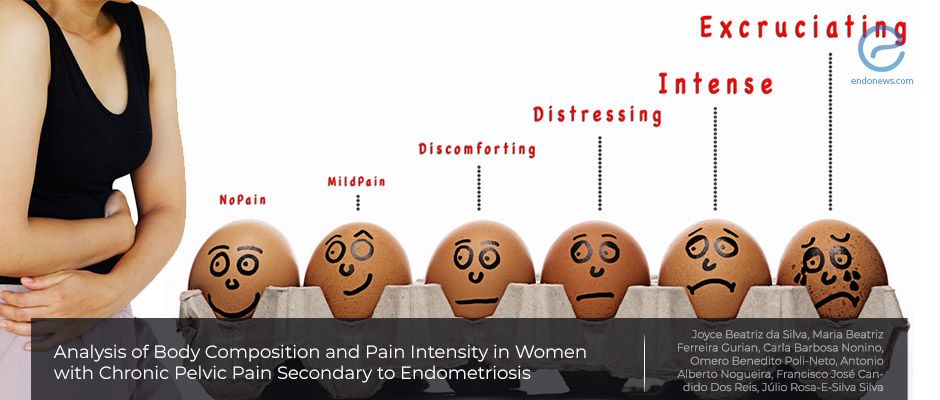The intensity of pelvic pain is higher in endometriosis patients
Oct 5, 2020
The pain scores of patients with chronic pelvic pain secondary to endometriosis were higher compared to the patients without endometriosis.
Key Points
Highlights:
- Even the anthropometric parameters and body composition are the same, the pain scores of endometriosis patients were higher compared to the pelvic pain patients without endometriosis.
What's done here:
- An observational case-control study is performed where the average body composition, the intensity of clinical pain, and the anthropometric markers.
- Body mass index, waist, abdomen, hip perimeters, and the percentage of body fat are analyzed.
- Patients with chronic pelvic pain due to endometriosis (n=46) and other causes (n=45) were compared.
Key Results:
- The age, BMI, %BF, or the waist-to-hip ratio were not different in both groups.
- The percentage of body fat was high in both endometriosis and non-endometriosis groups.
- The intensity of pain was statistically significantly higher in the endometriosis group.
Limitations:
- Participants in the group without endometriosis who had different etiologies and comorbidities were not considered separately.
Lay Summary
Silva J.B. et al., researchers from Brazil, conducted a case-control study to determine the intensity of clinical pain, the average body composition, and the anthropometric markers including the body mass index, the perimeters (waist, abdomen, hip), and the percentage of body fat in women with a clinical diagnosis of chronic pelvic pain secondary to endometriosis. They have published their study in the journal named Revista Brasileira de Ginecologia e Obstetrícia.
Earlier studies suggest that the adipose tissue has immune properties and anthropometric parameters and body composition may have an impact on the development of endometriosis.
The study included 46 women with CPP secondary to endometriosis and 45 women with chronic pelvic pain secondary to other causes.
No difference regarding age, BMI, %BF, or the waist-to-hip ratio was seen between both groups of patients with chronic pelvic pain, with or without endometriosis. The percentage of body fat was high in both endometriosis and non-endometriosis groups.
However, the group of patients with endometriosis showed higher pain scores compared to chronic pelvic pain patients without endometriosis.
Research Source: https://pubmed.ncbi.nlm.nih.gov/32898913/
chronic pelvic pain fat percentage pain intensity anxiety depression endometriosis

